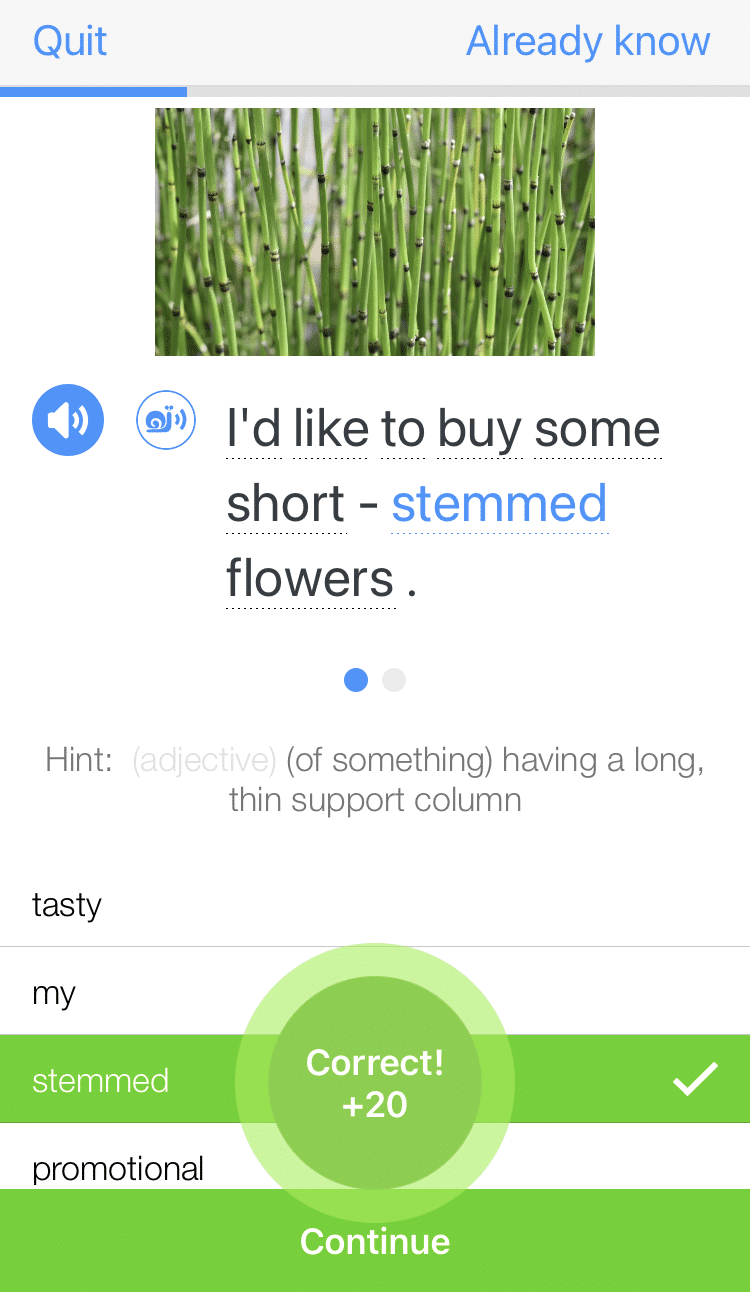Different Greetings in English

You probably already know “hello” and “how are you?” in English.
However, English speakers also use many other English greetings and expressions to say slightly different things.
Let’s learn how to use some other simple formal and informal English greetings, as well as fun slang expressions that English-speakers use to greet each other.
Download: This blog post is available as a convenient and portable PDF that you can take anywhere. Click here to get a copy. (Download)
What is a Greeting in English?
Greetings in English are expressions or sometimes gestures used when meeting someone. They are a way to show respect, friendliness and goodwill.
Common English greetings include phrases such as “hello,” “hi” and “good morning.”
Depending who you are with, greetings can range from formal to informal. Knowing a good range of greetings will help you start a conversation off right with anyone, no matter what the situation is!
Formal Greetings in English
It’s best to begin by using formal greetings in most business situations, and then listen to how your co-workers or business partners greet you.
It’s a good idea to wait until someone speaks casually with you before you speak casually with them. You may find that people will begin to use casual greetings with you over time, as you get to know each other better.
Formal greetings are also used when you meet older people.
1. Good morning / Good afternoon / Good evening
These are formal ways of saying “hello”, which change depending on the time of day.
Keep in mind that “good night” is only used to say “goodbye,” so if you meet someone late in the day, remember to greet them with “good evening,” rather than “good night.”
“Good morning” can be made more casual by simply saying “morning.” You can also simply use “afternoon” or “evening” as informal greetings, but these are less commonly used.
2. It’s nice to meet you / Pleased to meet you
These greetings are formal and polite. If you say this to someone when you meet him or her for the first time, it will make you seem courteous (polite).
Remember to only use these greetings the first time you meet someone. Next time you see the person you can show that you remember him or her by saying “it’s nice to see you again” or simply “it’s nice to see you.”
3. How have you been?
This greeting question is only asked by people who have already met. If someone asks you “how have you been?” they want to know if you have been well since the last time the two of you met.
4. How do you do?
This greeting is VERY formal, and quite uncommon and old-fashioned now, but it may still be used by some older people.
The proper response is “I’m doing well” or, as strange as it seems, some people even ask “how do you do?” right back as an answer.
Informal Greetings in English
5. Hey / Hey man / Hi
You can use “hey” and “hi” to greet someone instead of “hello.” Both are particularly popular among younger people.
While “hi” is appropriate to use in any casual situation, “hey” is for people who have already met. If you say “hey” to a stranger, it might be confusing for that person because he or she will try to remember when you met before!
You can also add “man” to the end of “hey” when greeting males. Some people also use “hey man” to casually greet younger women, but only do this if you know the woman very well.
Remember that “hey” doesn’t always mean “hello.” “Hey” can also be used to call for someone’s attention.
6. How’s it going? / How are you doing?
These are casual ways of asking “how are you?” If you’re trying to be particularly polite, stick with “how are you?” but otherwise, you can use these expressions to greet almost anyone.
The word “going” is usually shortened, so it sounds more like “go-in”. You can answer with “it’s going well” or “I’m doing well” depending on the question.
Although it’s not grammatically correct, most people just answer “good”—and you can too. Like when responding to “how are you?” you can also follow your answer by asking “and you?”
7. What’s up? / What’s new? / What’s going on?
These are some other informal ways of asking “how are you?” which are typically used to casually greet someone you have met before. Most people answer with “nothing” or “not much.”
Or, if it feels right to make small talk, you could also briefly describe anything new or interesting that’s going on in your life, before asking “what about you?” to continue the conversation.
8. How’s everything? / How are things? / How’s life?
These can be used to casually greet someone and ask how the person is doing, but most often these sentences are used to greet someone you already know. To these, you can answer “good” or “not bad.”
Again, if small talk feels appropriate, you could also briefly share any interesting news about your life, and then ask the person “what about you?” or another greeting question.
9. How’s your day? / How’s your day going?
These questions mean “how are you?” not just right now, but how you’ve been all day. You would use these greetings later in the day and with someone you see regularly.
For example, you might ask a co-worker one of these in the afternoon, or a cashier that you see at the grocery store every evening.
“It’s going well” is the grammatically correct response, but many people simply answer with “fine,” “good” or “alright.”
By the way, notice that “good,” “fine” or “not bad” are perfect answers to almost any greeting question.
10. Good to see you / Nice to see you
These casual greetings are used with friends, co-workers or family members that you haven’t seen in a while.
It’s common for close friends to hug when they greet each other, particularly if they haven’t seen each other in some time. So you might use this greeting along with a hug or handshake depending on your relationship with the person.
11. Long time no see / It’s been a while
These casual greetings are used when you haven’t seen someone in a long time, particularly if you meet that person unexpectedly.
How much is a long time? It depends on how often you normally see that person. For example, you could use one of these greetings if you normally see the person every week, but then don’t see them for a few months or more.
Usually, these phrases are followed by another question, like “how are you,” “how have you been?” or “what’s new?”
Slang Greetings in English
Slang greetings are extremely informal, and should only be used with people that you know very well, and feel very comfortable with.
Keep in mind that a lot of slang is regional, and using Australian slang in the United States, for example, can sound quite strange.
You’ll need to learn the local slang wherever you are, but these common examples will help you get started.
12. Yo!
This extremely informal greeting is common in the U.S. It comes from 1990’s hip-hop slang and these days it’s often used both seriously and jokingly.
This greeting should only be used with very close friends, and never in a business setting.
13. Are you OK? / You alright? / Alright mate?
This casual way of asking both “hello” and “how are you” is common in Britain.
You can respond “yeah, fine,” or simply “alright” before asking “and you?” to the other person.
14. Howdy!
This is a very informal abbreviation of “how do you do?” that is common in certain parts of Canada and the U.S.
Keep in mind that if you say “howdy” outside of these regions, you will sound like a cowboy, and it might make the other person laugh.
15. Sup? / Whazzup?
These greetings are abbreviations of “what’s up?” which are common among teenagers. Like with “what’s up?” you can answer “nothing” or “not much.”
16. G’day mate!
This casual greeting is an Australian abbreviation of “good day.”
Keep in mind that Australian greetings often use “ya” instead of “you.” So “how are ya?” is the same as “how are you?,” and “how are ya going?” is basically the same as “how’s it going?” or “how are you doing?”
17. Hiya!
This greeting, short for “how are you?”, is commonly used in certain parts of England. However, you don’t need to actually answer this question—you can just say “hey!” right back.
English Greetings for Emails and Letters
When writing an email or letter, there are specific greetings you should use to address the person you are sending it to. Here are some of the most important greetings you should know for this context.
18. Dear [recipient’s Name]
This greeting is commonly used in formal correspondence and professional settings. It indicates respect and maintains a polite tone. Including the recipient’s name makes it more personal.
It’s suitable for emails or letters addressed to colleagues, clients, or people who you have a professional relationship with.
19. Dear Sir or Madam
You can use this greeting when writing to someone whose name you don’t know, or when your letter or email is directed at a more general audience.
It shows respect and professionalism, making it a good option for things like job applications, formal inquiries, or letters to unknown recipients.
20. To whom it may concern
“To whom it may concern” is a formal greeting used in business letters or emails when the sender does not have a specific recipient in mind.
This greeting is appropriate when addressing general inquiries, formal complaints, or other situations where the recipient’s identity is unknown or irrelevant. This greeting has less of a personal touch, so best not to use it with someone you are more familiar with!
And of course, once you’ve nailed the introductions, there’s another set of phrases you need to learn.
That’s right, farewells (saying goodbye)! This video will give you a brief introduction to saying goodbye in English.
I hope you enjoy trying out these new English greetings. You’ll find that greeting people in different ways will help your English sound more natural, and it might even make English greetings more fun and interesting for you.
Download: This blog post is available as a convenient and portable PDF that you can take anywhere. Click here to get a copy. (Download)
And One More Thing...
If you like learning English through movies and online media, you should also check out FluentU. FluentU lets you learn English from popular talk shows, catchy music videos and funny commercials, as you can see here:
The FluentU app and website makes it really easy to watch English videos. There are captions that are interactive. That means you can tap on any word to see an image, definition, and useful examples.
For example, when you tap on the word "searching," you see this:
Learn all the vocabulary in any video with quizzes. Swipe left or right to see more examples for the word you’re learning.

FluentU helps you learn fast with useful questions and multiple examples. Learn more.
The best part? FluentU remembers the vocabulary that you’re learning. It gives you extra practice with difficult words—and reminds you when it’s time to review what you’ve learned. You have a truly personalized experience.
Start using the FluentU website on your computer or tablet or, better yet, download the FluentU app from the iTunes or Google Play store. Click here to take advantage of our current sale! (Expires at the end of this month.)










